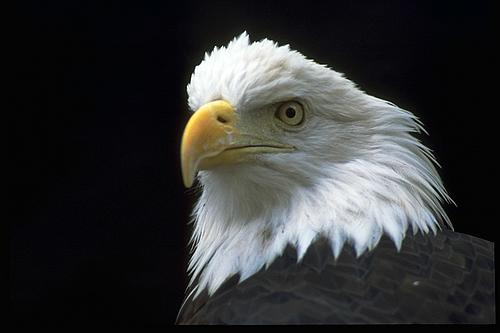
Bald eagle possibly poisoned in MI
A white-tailed deer and possibly a bald eagle were victims of a wildlife poisoning in Baraga County this spring.
Although poisoning cases are rare, Department of Natural Resources (DNR) officials said they want to find out exactly what happened, even if the survey takes an extended period of time.
“At this time, this case remains under investigation,” said Lt. Tim Robson, DNR’s Marquette station law enforcement supervisor. “We are coordinating efforts with other state and federal agencies.”
A conservation officer at the Keweenaw Indian Bay Community in Baraga found the deer and eagle somewhat close to one another.
Robson said the DNR cannot yet release how far the animals were found from one another or the exact poison found in the white-tailed deer.
“Something was the target of this poison,” Robson said. “You don’t just find this stuff on carcasses.”
The testing is being done at DNR’s Michigan State University’s Diagnostic Center for Population and Animal Health toxicology lab. DNR pathologist Tom Cooley said he expects the test results from the eagle to be complete by May 1.
The DNR is working with the U.S. Environmental Protection Agency, the U.S. Fish and Wildlife Service and the Michigan Department of Agriculture, said DNR press secretary Mary Dettloff.
“It’s kind of an unusual case because it involves two different animals found close to one another. We have concerns that people may be poisoning beyond the deer and eagle,” she said.
“Poison cases are not that common,” Dettloff said. “People usually use poison to exterminate ‘nuisance’ creatures — pigeons, geese, that sort of thing.”
Amy Spray, policy director for the Michigan United Conservation Clubs said wildlife poisoning is not a problem around the state.
James Clift, policy director of the Michigan Environmental Council, said such wildlife killings are unfortunate, but not a widespread problem.
“Sometimes you have people that think coyotes are getting their livestock and use bait poisoning,” he said. “But that that doesn’t seem to be the issue here. It’s never really been a problem.”
DNR officials said the last case involving wildlife poisoning was about five years ago in Dickinson County when a carcass head was found tainted with poison.
The bald eagle was taken off the state endangered species list on April 9. However, the bird is still protected under federal law, making it illegal to kill, hunt, harass or otherwise harm them.